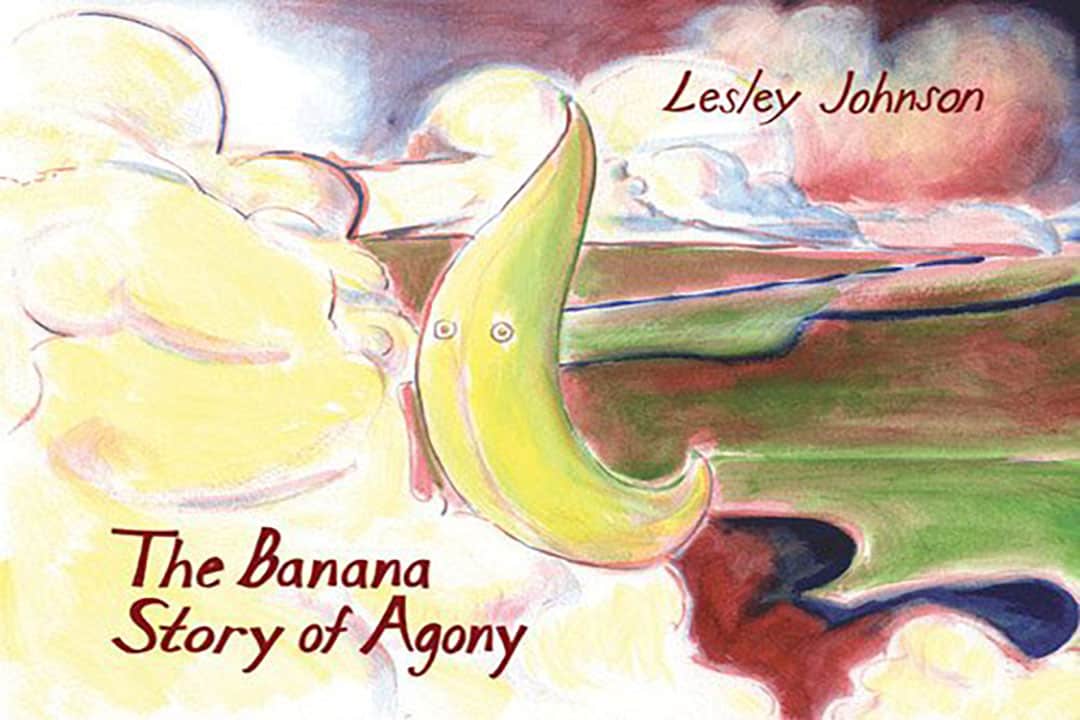I found The Banana Story of Agony in the children’s section of BMV Books. Something about it called to me. It was probably the words “banana” and “agony”: the former being my favourite fruit and the latter being my perpetual state of being. So naturally, I bought it without so much as a glance at the blurb. After initially abandoning it in the corner of my room next to an empty Pepcid bottle, I stumbled upon it again days later, and to my surprise found that I had purchased a masterpiece.
The Banana Story of Agony is a picture book, written and illustrated by Lesley Johnson and published by Conundrum Press, an independent publisher known for its graphic novels. However, it would be folly to assume that The Banana Story of Agony can be classified as anything other than high art.
On a superficial level, this book looks like any other children’s book. Illustrations are accompanied by large, simple text running along the bottom, and the stories all feature children, personified objects, or mythic persons such as Santa Claus. Upon looking closer, however, one discovers that it not only appears to be written for a child, but also written by a child. The illustrations are simple and unpolished, and you can see the white space where the watercolour paper shows through. In fact, the pictures are oddly reminiscent of locker murals painted by middle school art clubs.
Even the text, which Johnson created using both her left and right hand simultaneously, mimics a childlike scrawl. But this isn’t a criticism. This precisely shows how the work blurs the line between child and adult literature, art and kitsch, satire and seriousness.
One of the work’s most obvious blurred dualities is that of innocence and disturbance. The childlike simplicity of the illustrations are juxtaposed with the absurdity and undeniable creepiness of the four stories: “Love”, “There’s No One Home: A Story of Indifference”, “Susan had a Chicken on her Butt”, and the titular “Banana Story of Agony.” The plots of these tales resemble that of an uncomfortably vivid and particularly bizarre dream, one that you wake up remembering and later recount to an annoyed group of strangers while on acid at a house party.
Like Daniel Johnston’s cassette covers, Mark Perry’s Sniffin’ Glue, and Maurice Sendak’s Where the Wild Things Are, Lesley Johnson’s The Banana Story of Agony is undeniably punk rock in its defiance of conventional norms of art and literature. It is art from the ground up, born from the grassroots, from a place where there are no rules and where we are all a little “bananas.”


